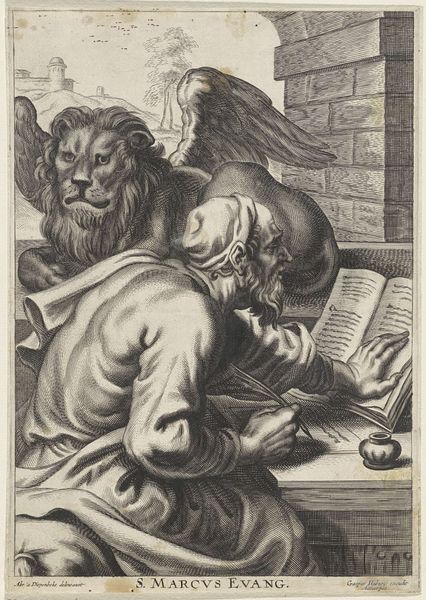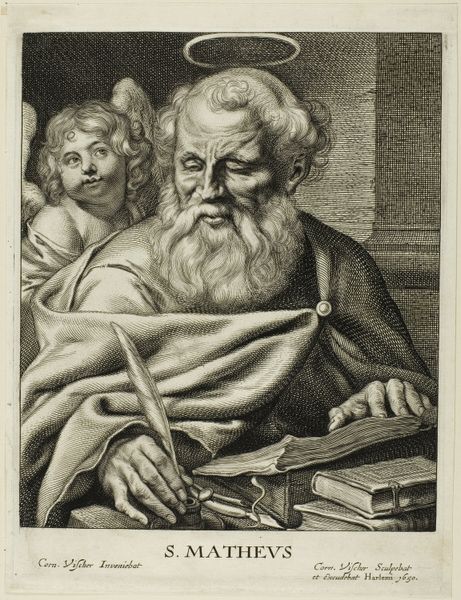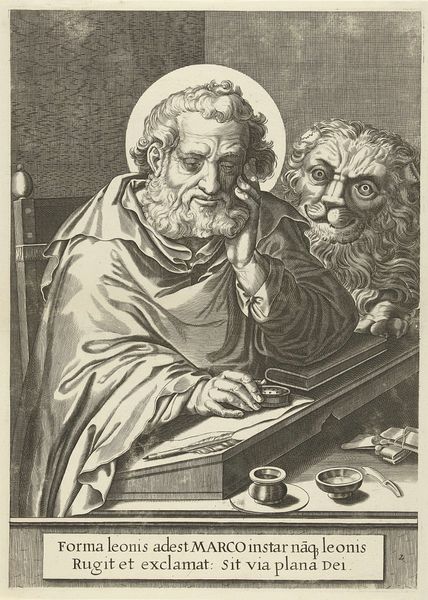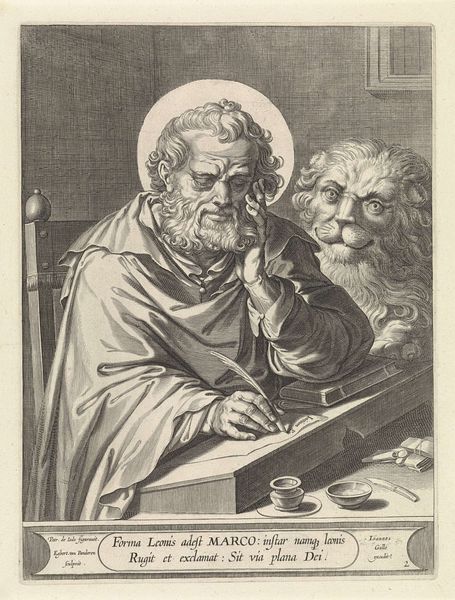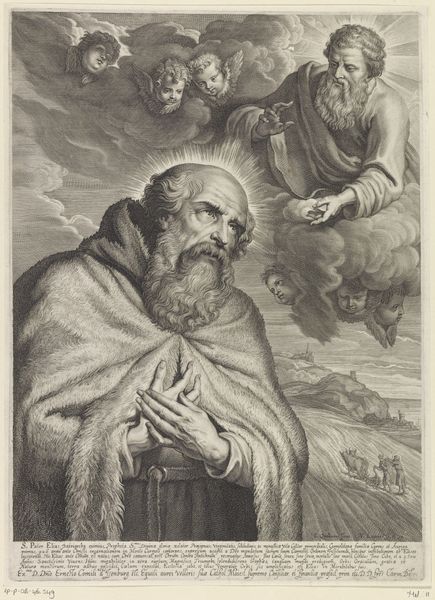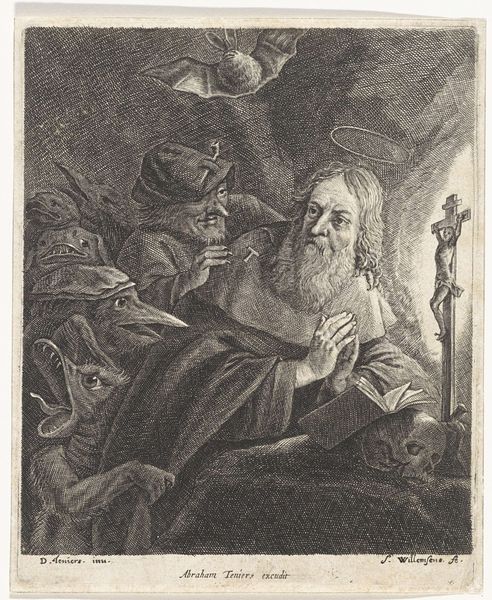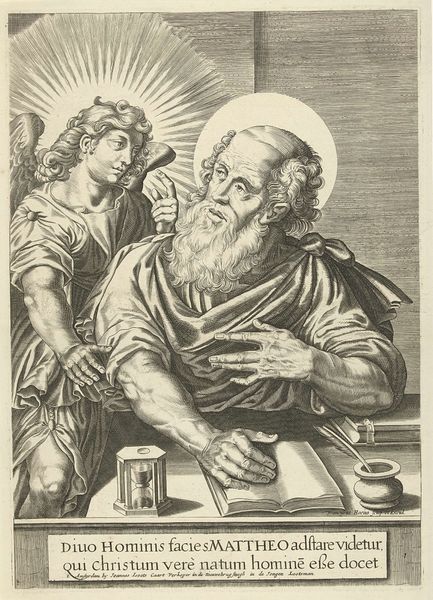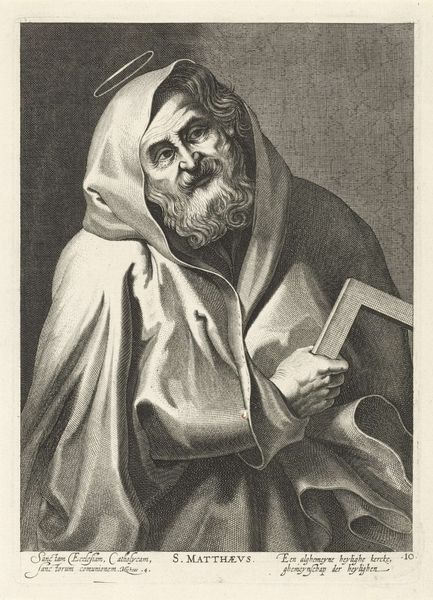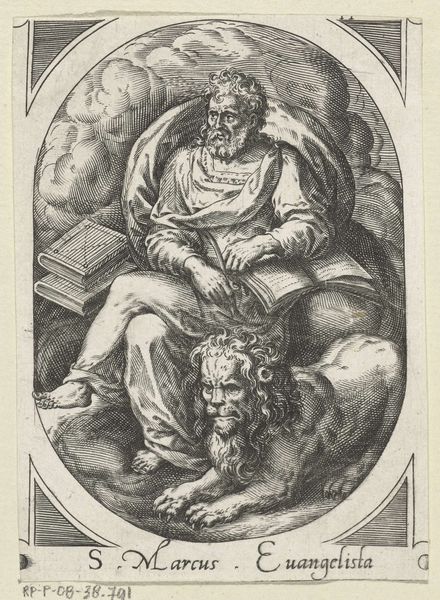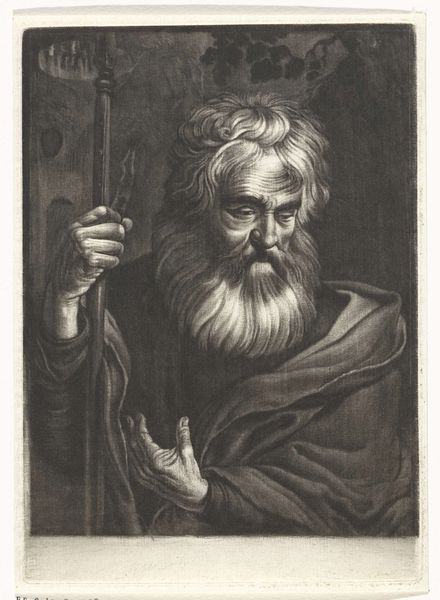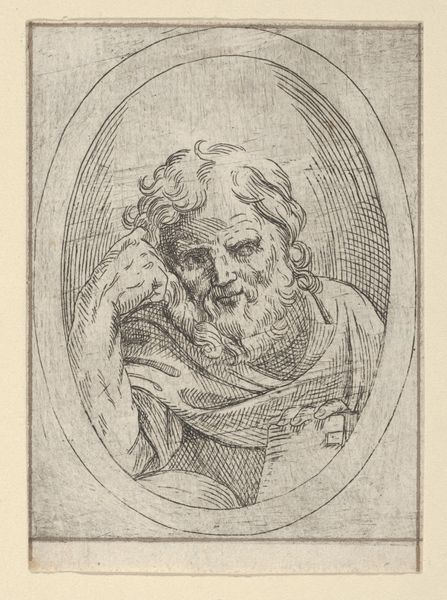
drawing, print, paper, engraving
#
portrait
#
drawing
#
baroque
# print
#
paper
#
charcoal art
#
history-painting
#
engraving
Dimensions: 260 × 197 mm (plate); 275x210 (sheet)
Copyright: Public Domain
Curator: Editor: This is "Saint Mark, from The Four Evangelists" by Cornelis Visscher, created around 1650. It's an engraving on paper. The detail is incredible, especially in the textures, from the saint's beard to the lion's mane. What draws your attention when you look at this piece? Curator: Well, look closely at the lines. Notice how Visscher manipulates the density and direction of those engraved lines to create light, shadow, and texture. The engraving process itself – the labor involved in cutting those lines into a metal plate, inking it, and pressing it onto paper – that's key here. It’s not just about depicting Saint Mark; it's about the *making* of this image and its accessibility through reproduction. What do you notice about the division of labor? Editor: The artist both invented and engraved it - at least that is what the print states in Latin "Invenichat" and "Sculprbat." So they managed the entire process and owned the means of production themselves? Curator: Precisely! Visscher controlled the means of production, from conception to distribution. This control directly impacts the artistic product. Think about the contrast between the meticulously rendered details and the mass-producible nature of the print. This brings "high art" within reach of a broader audience through this repeatable medium. Do you think the lines signify the Baroque style well? Editor: Definitely, especially with the dramatic lighting. And knowing about the process helps me appreciate the level of skill involved. Seeing the texture helps me to understand more about how this artwork spread through printed distribution. Curator: Exactly. By understanding the material processes and the means of production, we gain a deeper appreciation for the artist's labor, the cultural context, and the democratization of art in this period.
Comments
No comments
Be the first to comment and join the conversation on the ultimate creative platform.
